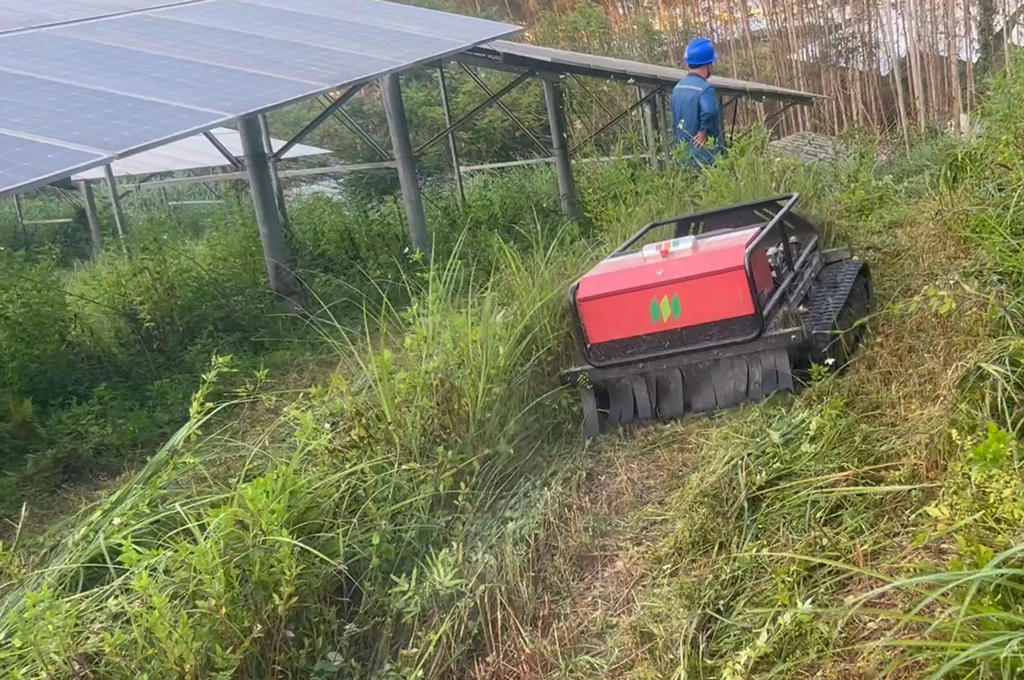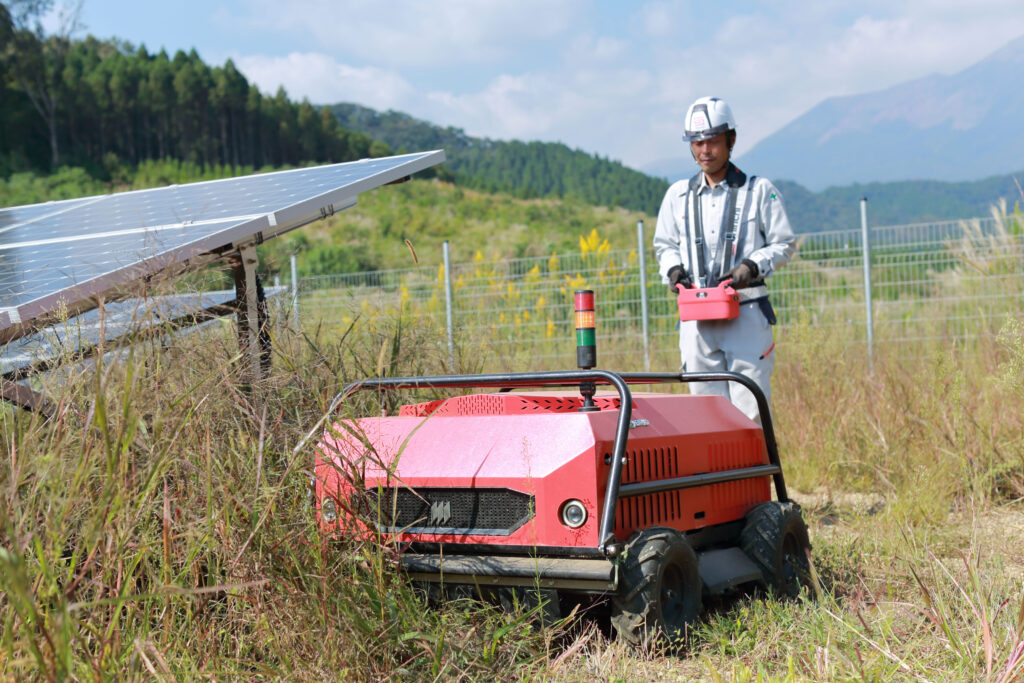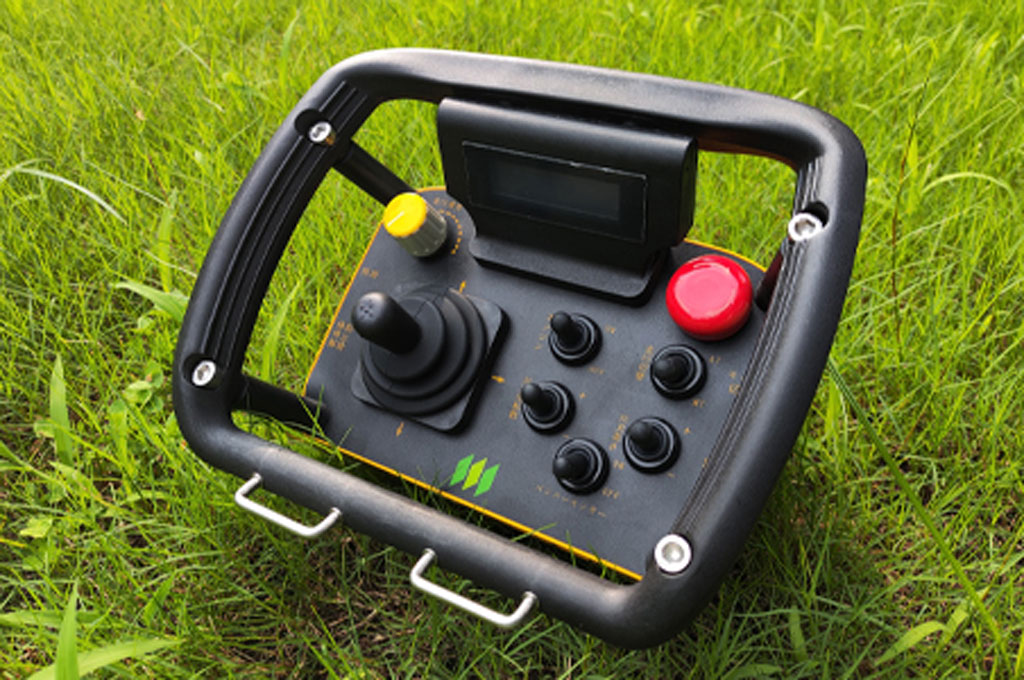Introduction
Mowing slopes has always been a challenge for groundskeepers and maintenance teams. Traditional push or riding mowers struggle to maintain stability, often putting workers at risk on steep or uneven terrain. With the expansion of industries like solar farms, airports, and highway departments, the need for specialized solutions has become increasingly pressing. This is where remote-controlled mowers come in. Designed for complex terrain, these machines combine safety and efficiency, providing reliable mowing results even on slopes where traditional equipment struggles.

Understanding the Challenges of Mowing Slopes
Working on sloped terrain presents unique risks and limitations:
- Limited Stability: Most commercial mowers can only handle slopes of 15-20° before traction and safety are compromised.
- Soil Conditions: Wet grass, loose gravel, and sandy soil can reduce traction and make the machine prone to slipping.
- Obstacles: Rocks, ditches, and uneven surfaces require the operator’s constant attention.
- Worker Safety: Manually mowing on slopes increases the risk of falls, rollovers, and injuries.
For industries dealing with steep slopes and uneven terrain, relying on traditional equipment can quickly become costly and dangerous.
How Remote Control Mowers Adapt to Slope Operations
Modern industrial mowers designed for remote operation address these issues through specialized engineering:
- Track System – Many slope mowers use rubber tracks instead of wheels to grip uneven ground and prevent slipping.
- Low Center of Gravity – Heavy components are mounted low, keeping the machine stable even on steep slopes.
- High-Torque Engine – The industrial-grade motor ensures continuous power output when climbing or descending.
- Precision Remote Control – The operator can safely steer the mower from a distance of up to 200 meters, avoiding hazardous areas.
These design choices not only make slope mowing possible, but also more efficient.
Maximum Slope Capacity: Expected Values
Not all slope mowers are created equal. Performance depends on design, engine power, and terrain conditions.
- Standard Remote Control Mowers – Safely operate on slopes up to 30-35°.
- Heavy-Duty Industrial Models – The MC700 easily handles slopes up to 40-45° and is widely used in power plants, airports, and highways.
- Advanced Track Systems – Some specialized models can increase the slope limit to 50°, but actual performance always depends on ground stability.
| Mower Type | Safe Slope Capacity | Ideal Application |
|---|---|---|
| Push/Riding Mower | 10–15° | Residential lawns |
| Standard Remote Mower | 30–35° | Farms, small slopes |
| Industrial Slope Mower | 40–45° | Airports, solar plants, highways |
| Advanced Crawler Model | Up to 50° | Extreme industrial terrains |
This comparison illustrates why investing in the right machine is crucial for industries facing steep, high-risk areas.
Real Applications of Industrial Mowers
Industries around the world already rely on remote-controlled mowers for safety and efficiency:
- Solar Farms – Clearing weeds beneath photovoltaic panels improves power generation efficiency and reduces fire risks.
- Airports – Wide open spaces and embankments require continuous vegetation control without disrupting operations.
- Highways and railways – Maintaining roadside slopes prevents soil erosion and improves visibility.
- Golf courses – Precision mowing on hilly fairways keeps turf grass in top condition.
These machines remove workers from hazardous areas and ensure consistent mowing, becoming an integral part of modern facility management.
FAQ: Remote-controlled Slope Mowers
Q: What is the maximum slope gradient a remote-controlled mower can handle?
A: Most industrial models can safely mow slopes up to 40-45°. Some advanced tracked designs can extend this capability to 50°.
Q: Are slope mowers safe for the operator?
A: Yes. The operator can control the mower from a safe distance, and built-in sensors and perimeter systems reduce risks on site.
Q: Do slope mowers completely replace manual labor?
A: They significantly reduce labor requirements, but occasional hand mowing is still required in hard-to-reach areas.
Q: Which industries benefit most from slope mowing technology?
A: Solar farms, airports, public works departments, golf courses, and utilities all benefit from reduced labor costs and improved safety.
Conclusion
Steep slopes no longer have to be a maintenance nightmare. With the right remote controlled lawn mower, operators can safely and efficiently manage inclines up to 45°, eliminating risks that traditional equipment cannot handle. For industries facing large-scale vegetation challenges, an industrial lawn mower is more than a tool—it’s an investment in safety, efficiency, and long-term cost savings.


